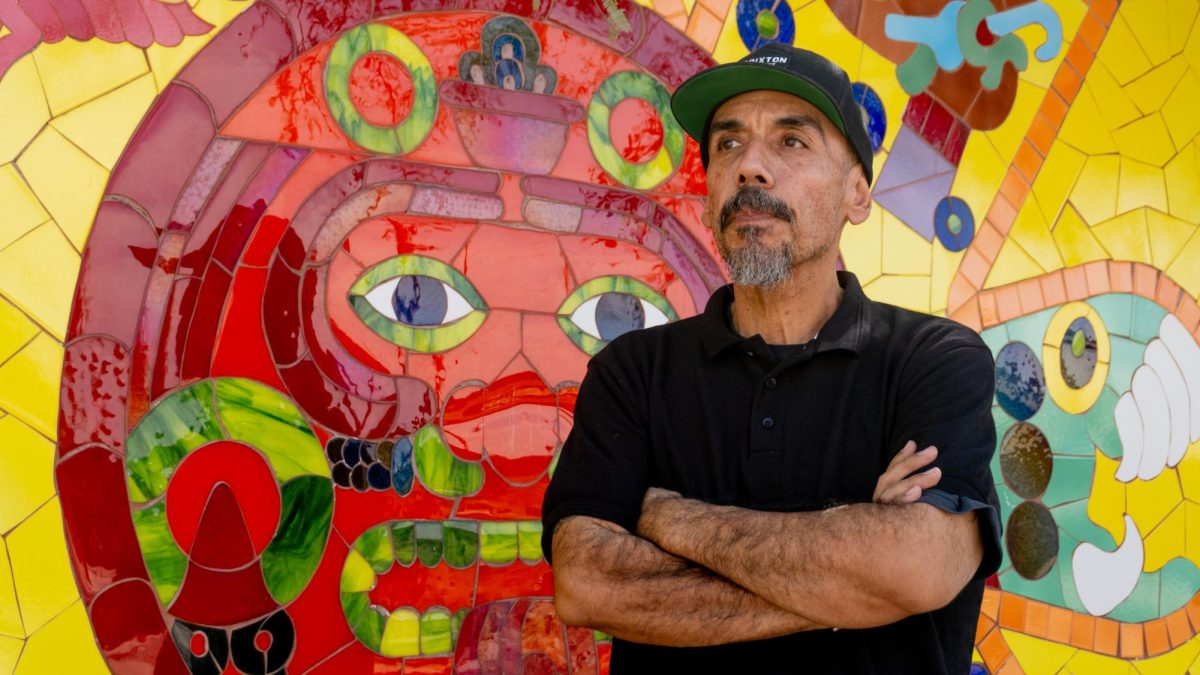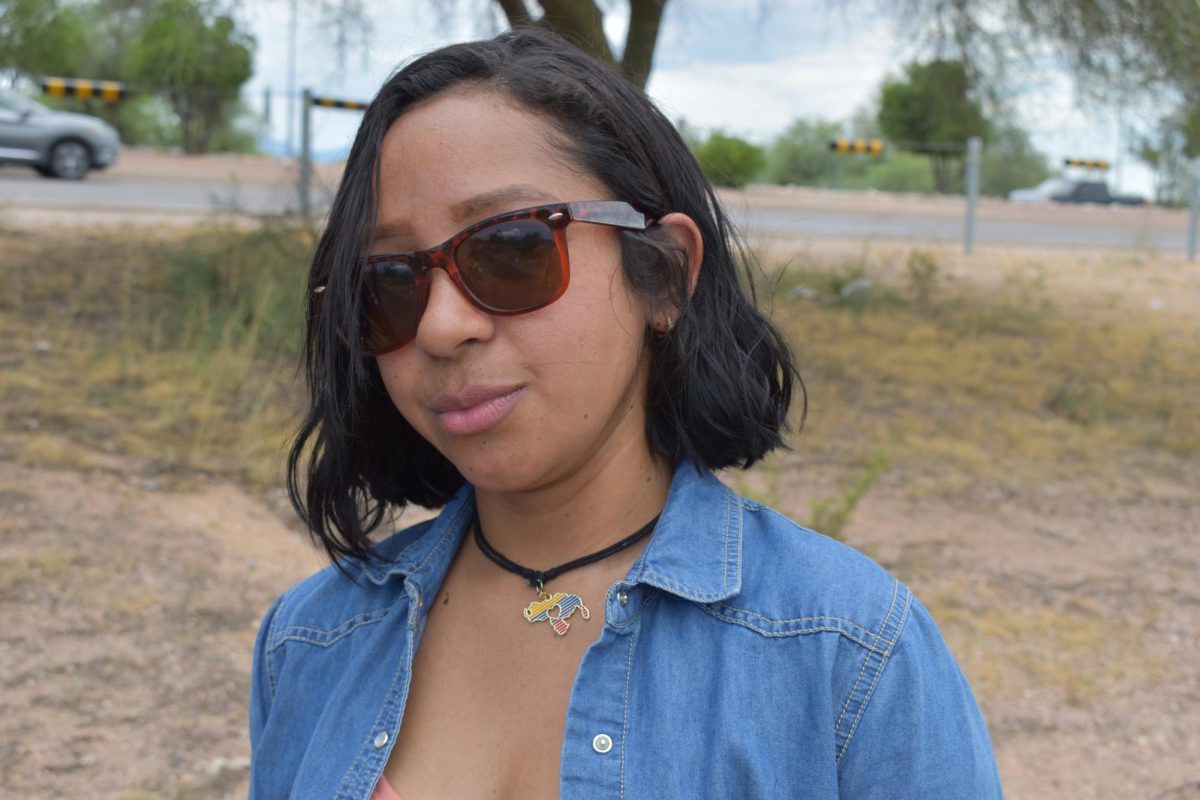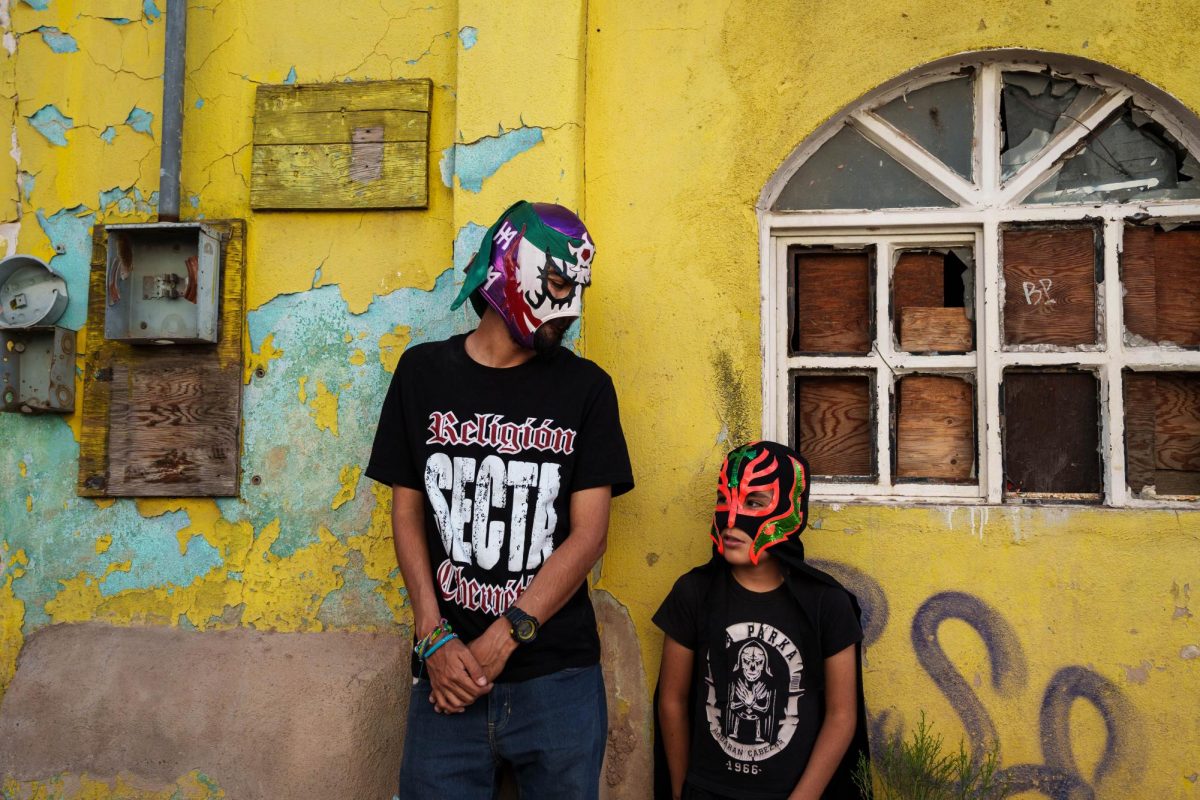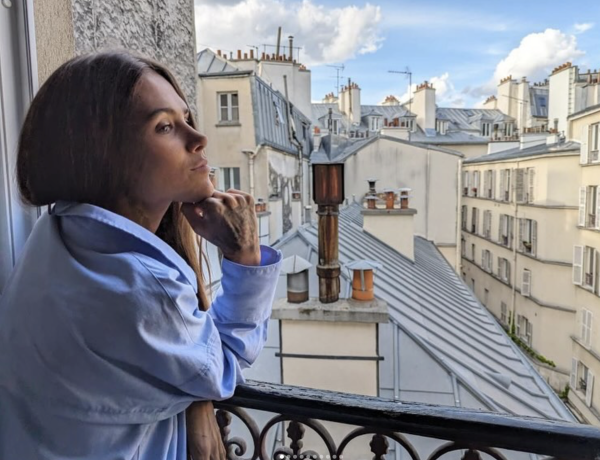
Artist Nathalie Raye handles the painted prickly pear layers that make up her finished pieces, each one resembling delicate “fairy wings.”
The Art of Desert Resilience
People have asked Rio Rico artist Nathalie Harmening if her ethereal sculptures are made from plastic.
“No! It’s natural prickly pear!” she responds.
With a half-laugh and a quick, knowing smile, Harmening, who goes by the name Nath Raye to honor her sculptor mother Donna Rae, describes her art, which is unlike anything you’d expect to emerge from the dry sands of Arizona’s desert.
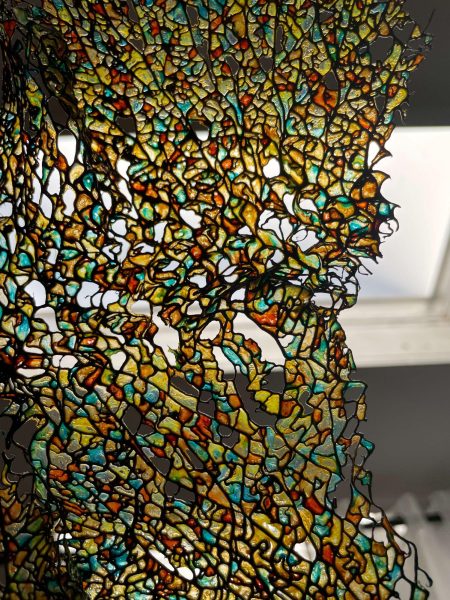
Raye’s prickly pear finished prickly pear wings.
At the Fall Art Walk in Tubac last weekend, she held her delicate, wing-like sculptures made from Sonoran prickly pear cactus fibers. Her work is available exclusively at the Turquoise Tortoise Gallery in Tubac.
Here, under the unyielding Arizona sun, Raye’s artistry and her life story have become deeply entangled in the resilience of the land.
Tubac, a vibrant yet understated artist colony near the Mexican border, has quietly drawn artists like Raye, offering both escape and inspiration. For her, Tubac and the surrounding desert embody survival and transformation. Her work, like the prickly pear itself, isn’t fragile; it speaks of strength through hardship.
“The desert is so full of life!” she says, rejecting the common misconception of the desert as barren.
In her world, the arid land pulses with hidden beauty, grit and growth — a perfect mirror for her own journey.
Raye, originally from Oregon, didn’t come to the desert in search of art. Rather, art found her when her life was turned upside down.
In 2014, while she was living in New Mexico, her health deteriorated rapidly after she was diagnosed with fibromyalgia, an autoimmune disorder. Spine issues left her bedridden and in pain.
She lost her teaching career, her mobility and a doctoral program in political science that she had worked hard to pursue.
“I had to quit teaching because I couldn’t walk anymore. I had to learn how to use my legs and hands again,” she recounts.

Raye and her two dogs, including her service dog Belgian Malinois “Jessie.”
Determined to reclaim her life, she adopted Jessie, a service dog who became her steadfast companion, and started hiking, slowly regaining strength.
“I started bringing things home, like long roots after rain,” she explains.
These objects, once simple reminders of the outdoors, slowly began shaping her new artistic vision and grounding her recovery.
“Art gave me something else to wake up for,” the 63-year-old says. “For us middle-aged women going through grief, it’s crucial to learn resilience instead of sitting in despair.”

In her studio, Raye holds delicate, uncoated layers of raw and airy dried prickly pear cactus fiber.
Sculpting Resilience: The Cactus as Canvas
Creating her intricate sculptures is a painstaking ritual that pays homage to the desert’s strength. The process starts with cactus fibers that Raye carefully harvests.
“Processing the cactus takes about three months. I spent years figuring out how to make those thin pieces of fiber that I can bend and are indestructible,” she said.

The prickly pear pieces are soaked in Raye’s water tank to soften before they are dried into the intricate layers that form her signature sculptures.
She collects, stews, dries and layers each fragile piece of cactus fiber, hand-transforming them into “wings” that resemble fairy-like structures. It’s a labor of love and patience, requiring physical endurance and an intimate understanding of the desert’s cycles.
Each sculpture embodies nature itself, with colors and textures that feel both foreign and familiar, urging onlookers to touch, even “taste,” as Raye jokes. In her studio, she carefully controls the environment, closing curtains to protect her work from Arizona’s harsh sunlight.

Raye handles prickly pear cactus pieces with ease; since her loss of finger sensitivity from chronic illness lets her work undeterred by the thorns.
Living with the Land
Raye and her husband Ron chose to settle in Rio Rico, a largely Hispanic community with deep historical roots. Through art, she connects not only with her own journey but with the rich legacy of the Latinx families that have called it home for generations.
“We didn’t want to live in a white enclave,” she explains. “I wanted to understand the culture of the border, the place I was settling in.”
“The knowledge I gained about this area helped me understand what people go through when they cross the border,” she added. “We are sympathetic to the challenges migrants encounter here, with so much limited food and water. The desert has its beauty only if you know your cactuses and survival tips to face its hard conditions.”
Raye’s journey, much like her art, is one of transformation and endurance.
“I cannot wait until I wake up tomorrow and do this again,” she says with conviction. “That feeling…that is the magic of resilience!”

Raye shows one of her most vibrant pieces, a female warrior representation in front of her house.



